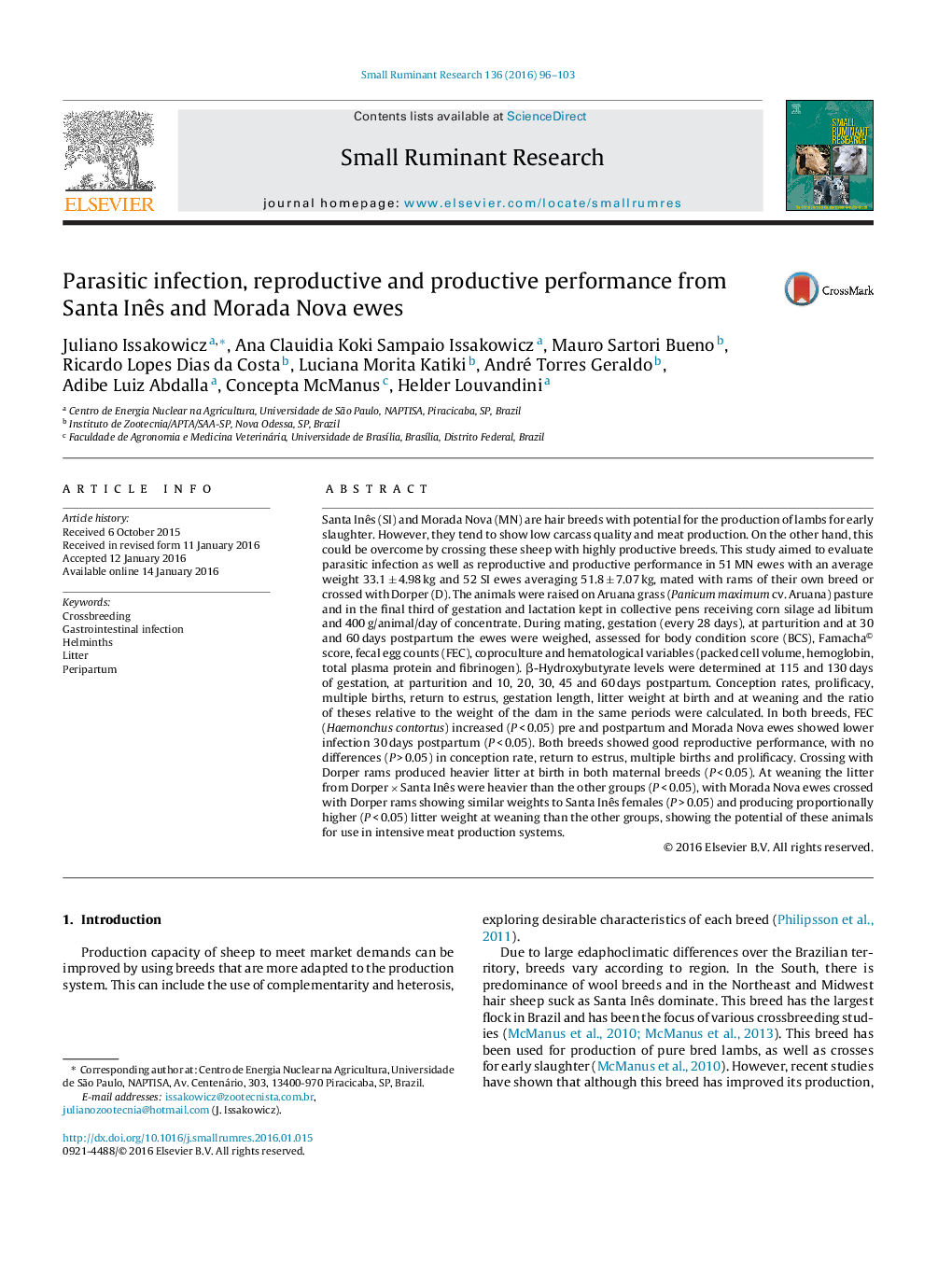| Article ID | Journal | Published Year | Pages | File Type |
|---|---|---|---|---|
| 2456674 | Small Ruminant Research | 2016 | 8 Pages |
•Gastrointestinal infection by Haemonchus genus did not affect the health of Santa Inês and Morada Nova ewes.•Santa Inês and Morada Nova produced heavier litter at birth and at weaning when crossed with Dorper rams.•Morada Nova ewes when crossed with Dorper rams produced proportionally higher amount of lambs.•Morada Nova and Santa Inês ewes showed potential to be used in intensive meat production systems.
Santa Inês (SI) and Morada Nova (MN) are hair breeds with potential for the production of lambs for early slaughter. However, they tend to show low carcass quality and meat production. On the other hand, this could be overcome by crossing these sheep with highly productive breeds. This study aimed to evaluate parasitic infection as well as reproductive and productive performance in 51 MN ewes with an average weight 33.1 ± 4.98 kg and 52 SI ewes averaging 51.8 ± 7.07 kg, mated with rams of their own breed or crossed with Dorper (D). The animals were raised on Aruana grass (Panicum maximum cv. Aruana) pasture and in the final third of gestation and lactation kept in collective pens receiving corn silage ad libitum and 400 g/animal/day of concentrate. During mating, gestation (every 28 days), at parturition and at 30 and 60 days postpartum the ewes were weighed, assessed for body condition score (BCS), Famacha© score, fecal egg counts (FEC), coproculture and hematological variables (packed cell volume, hemoglobin, total plasma protein and fibrinogen). β-Hydroxybutyrate levels were determined at 115 and 130 days of gestation, at parturition and 10, 20, 30, 45 and 60 days postpartum. Conception rates, prolificacy, multiple births, return to estrus, gestation length, litter weight at birth and at weaning and the ratio of theses relative to the weight of the dam in the same periods were calculated. In both breeds, FEC (Haemonchus contortus) increased (P < 0.05) pre and postpartum and Morada Nova ewes showed lower infection 30 days postpartum (P < 0.05). Both breeds showed good reproductive performance, with no differences (P > 0.05) in conception rate, return to estrus, multiple births and prolificacy. Crossing with Dorper rams produced heavier litter at birth in both maternal breeds (P < 0.05). At weaning the litter from Dorper × Santa Inês were heavier than the other groups (P < 0.05), with Morada Nova ewes crossed with Dorper rams showing similar weights to Santa Inês females (P > 0.05) and producing proportionally higher (P < 0.05) litter weight at weaning than the other groups, showing the potential of these animals for use in intensive meat production systems.
